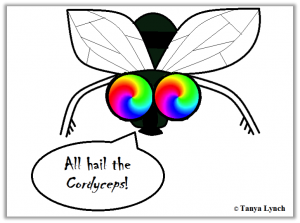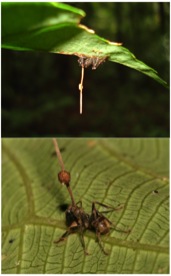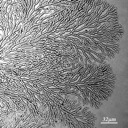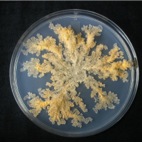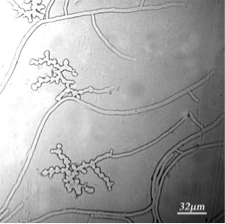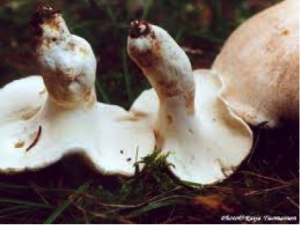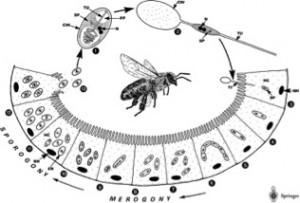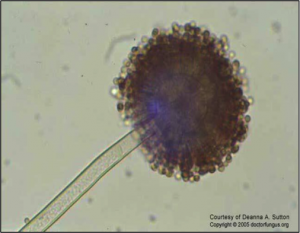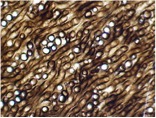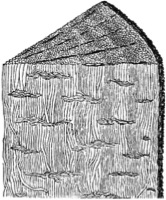By Joseph Anderson
Despite the enormity of the planet we live on, there is an even bigger space for life to develop and exist right under our very noses. I’m not talking about the 4th dimension or the faerie realm; I am talking about the phyllosphere. You see, microorganisms can live inside the leaves, stems, and roots of plants. Overall, the surface area of the phyllosphere is twice as large as the surface area of all land on earth (Zimmerman and Vitousek 2012). Humans have billions of bacteria living inside our bodies to help us live. Plants have this same relationship, but with microbial fungi! Within these plants lie a diversity of life that is a new frontier in science.

A picture of a Nematode. Most of them have a similar morphology.
http://enrichla.org/wp-content/uploads/2012/06/nematodes.jpg
As we start to look into this microcosm of life, we find that these fungi are far from dormant; many of these fungi play important symbiotic roles with the plants. Nematodes are a soil microorganism found abundantly in most terrestrial soils. Although most of them survive by eating fungi, many of them are considered agricultural pests (Sikora et al. 2008). We have recently found several species of endophytic fungi that decrease the plant damage caused by nematodes (Sikora et al. 2008, Singh et al 2013). These recent studies have been proving the efficacy of using the beneficial endophytes as a natural biocontrol method for agriculture.
Endophytes get even cooler though. Since the discovery of endophytes, we have been looking at what roles they play in their plant hosts. What scientists are finding will surprise you. One scientist from Seattle has been looking at the endophytes that exist in plants that grow by hot springs. The soil in these environments can reach temperatures in excess of 100 degrees Fahrenheit, which is usually beyond the range at which most plants or fungi can survive (Tennesen, 2010). When the plant and its fungal partner are separated from each other, neither can survive in such extreme temperatures. So we know that this heat tolerance is an emergent property of the two species. That means that this trait only exists when the two different species are existing mutualistically. Dr. Rodriguez then took the endophyte from the extremely hot soil and inoculated a tomato plant with them. The tomato with the endophyte can now survive in soil temperatures over 140 degrees Fahrenheit. Later studied showed that this mutualism is actually a 3-way symbiosis (Rodriguez and Redman, 2008). For the endophyte to confer heat tolerance to the host plant, the endophyte needs to be infected with an RNA virus. Similar studies have looked at plants that live in coastal areas, where salt tolerance is something plants need to survive. For some species of plant, the salt tolerance is an emergent property of another fungal symbiosis (Rodriguez and Redman, 2008). The deeper we look into endophytes, the more complexity and interconnectedness we see.
I know this is completely mind blowing, but this rabbit hole keeps going. Are you ready to dive in? The same species of fungi that confers the heat or salt tolerance to the plants are found in other, low-stress environments. However, the endophytes that live in low-stress environments do not confer the same stress-tolerance that the high-stress endophytes do (Rodriguez and Redman, 2008). This means that the endophyte responds differently with its plant partner in different habitats. Basically, the fungus is helping the plant survive in whatever environment the symbiosis developed in. But wait, there’s more: the same species of fungi can be symbiotic, like we have been discussing, or it can be parasitic, depending on the plant species (Rodriguez and Redman, 2008). In some cases, like tomato plants, it can even come down to the variety of tomato. This is stumping scientists. What makes these endophytes choose mutualistic versus parasitic lifestyles? Dr. Rodriguez thinks it can come down to a single mutation.
During the last 5 massive extinctions that our planet has gone through, natural historians have noted an increase in fungal diversity immediately afterwards. Some environmental scientists theorize that we are going through the 6th major extinction event right now. How are we going to survive this time of extreme change on our planet? Paul Stamets, A forefront mycologist of our times, says that the creatures that ally with fungi survive catastrophes. For generations entire societies have experienced mycophobia, the irrational fear of mushrooms. It is time to transcend the mindset of fear and learn to love fungi, the same way we love the beauty of orchids or the comfort of your domesticated cat. We now know about the symbiotic systems flourishing between plants and fungi. Imagine the kind of emergent properties we could experience once we embrace our fungal partners for the good of the world.
Bibliography
Rodriguez, R. and Redman, R (2008, 19 June). More than 400 million years of evolution and some plants still can’t make it on their own: plant stress tolerance via fungal symbiosis. Journal of Experimental Botany 59(5), 1109-1114.
Sikora, R.A., Et al (2008, July). Mutualistic endophytic fungi and in-planta suppressiveness to plant parasitic nematodes. Biological Control, 46(1), 15-23.
Singh, U.B. Et al (2013, January). Can endophytic Arthrobotrys oligospora modulate accumulation of defence related biomolecules and induced systemic resistance in tomato (Lycopersicon esculentum Mill.) against root knot disease caused by Meloidogyne incognita. Applied Soil Ecology 63, 45-56.
Tennessen, M. (2010, May). More Food From Fungi? Scientific American, 302(5), 27-28.
Zimmerman, N. B. and Vitousek, P.M. (2012, 12 June). Fungal endophyte communities reflect environmental structuring across a Hawaiian landscape. PNAS, 109(32), 13022-13027.




